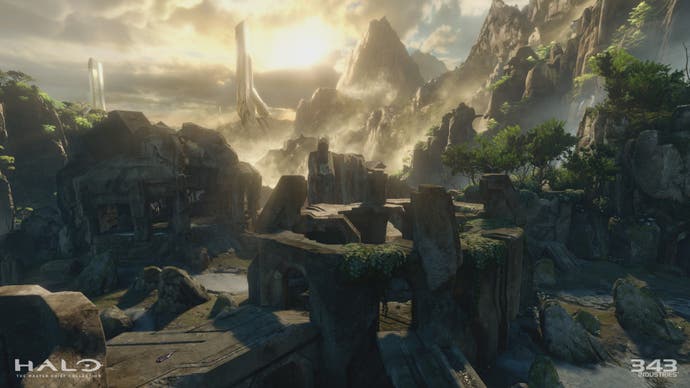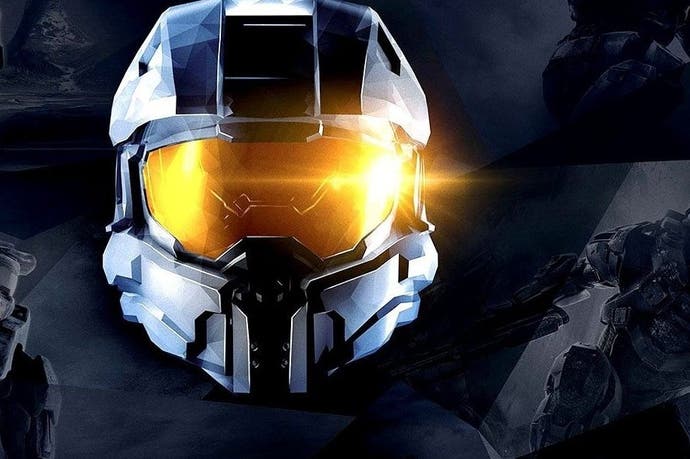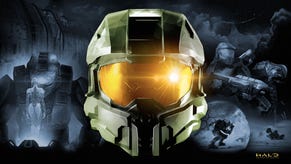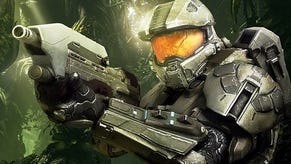Halo: The Master Chief Collection review
Remembrance of rings past.
We remember in HD. That's the thing high-definition remakes are constantly having to compete against - the fact that, the way our minds would have it, past games that we love enough to conjure back into existence have always looked pin-sharp, beautifully lit, and on a par with their reconstructed, modernised selves. "Remembrance of things past," wrote Marcel Proust, "is not necessarily remembrance of things as they were."
While there's a good chance Proust wasn't talking specifically about Halo: The Master Chief Collection, he would (probably) have been fascinated by one feature of the game in particular: the extraordinary ability, in the Anniversary editions of Halo: Combat Evolved and Halo 2, to switch between the original and remastered visuals at the press of a button. It is an inexhaustible stream of misremembered revelation and disjointed expectations.
But let's back up and take an overview of what's here. The Master Chief Collection includes Halo: Combat Evolved, Halo 2, Halo 3 and Halo 4. Each game runs at 1080p (except Halo 2 Anniversary Edition, which is capped at 1328x1080, probably to enable that Proustian switching) and 60 fps, a big jump for the original Xbox games and a meaningful, noticeable improvement for 360 titles Halo 3 and 4. Each game comes with its original multiplayer component, and Halo 2 gets a separate and additional Anniversary multiplayer mode featuring six maps remade with gorgeous textures and geometrical tinkering.

The joy of the Collection is that it defies the typically one-way economy of games made familiar by the trade-in market - that old stuff is worth less. Here value is marked by scarcity, and sentimentality. So while it's good to see Halo 3 and 4 clutching extra pixels and loaded with map packs, I was really excited, first of all, to load up the original Halo. Memory is never stronger than when attached to a place, where it seeps into corners and textures the walls.
Above all else, it's good to have the original Halo's multiplayer back. I'm not sure why more hasn't been made of this, considering the major disappointment of 2011's Anniversary edition was its absence, and here it's playable over Live for the first time. While some of the maps have lived on in remakes, some of the best have been sealed away - like the orbital sniper battles of Boarding Action, or the frantic teleportation of Chiron TL-34 - and a further six have previously only been available on PC or Mac. Others, like Damnation and Prisoner, were remade for the Anniversary multiplayer (which isn't included here - a minor dent in the Collection's all-encompassing approach, presumably as it was tooled for the Reach engine) but there's still a particular magic to having things as they were, hoarded together as a complete set. Combat Evolved's movement has a heavier feel than any of its sequels - and very particularly, a delay on landing before Chief can jump again which prevents fleet-footed navigation - but it's still enjoyable, and playable on merit, and not just novelty.
The justifiable star of the Collection, though, is the decade old Halo 2. The game's HD refit is comprehensive. The campaign has been given the same impressive level of visual overhaul as Combat Evolved, with a beautiful new set of textures and lighting laid over the original handling. This time, though, the regular weakness of HD remakes - lacklustre cutscenes - has also been addressed, with a fresh set of very expensive-looking CG replacements sunk into place. Some interesting peculiarities emerge from these changes.
It's interesting to note how cutscenes set a level of expectation which carries over into the playable sections of the game. Halo 2 feels like a much newer thing thanks to these almost incongruously clear and high quality additions. They also - perhaps in combination with time and a general sense of forgiveness - give the slightly convoluted plot more drive and clarity. And yet, at some points switching back to the original graphics engine makes the game feel more... right. It's probably a question of familiarity and subtle changes to feedback through the also-remastered sound, but at some especially more frantic moments stripping back the Anniversary overlay made me feel more comfortable and in sync with the game.

Then there's multiplayer. The retrieval of the vanilla Halo 2 multiplayer setup from the out-of-service archive is, for long-term players of the series like me (and everyone who cheered the "as it shipped ten years ago" announcement at E3), the biggest draw of the Collection. The first Halo was loved but limited, played over LAN and same-screen matches, but Halo 2 was the foundation of Xbox Live, and its maps and modes represent a vast, lost communal playground. That playground is reopened and again, some of the most valuable things inside are the maps never updated or remade: the square urban standoffs of Turf, the once-controversial grav lift of Colossus, the obliterating train of Terminal.
At 1080p and 60 frames per second, Halo 2's original multiplayer is a heck of a thing to have back, and it stands alongside Halo 3 as the core, peak substance of Halo's online game. The upshot is also that some thunder is stolen from the remastered showcase of Halo 2 Anniversary, the new six-map new mode based on the original multiplayer but built with modern engine, graphics and gameplay. The choice of maps is smart - Ascension, Zanzibar, Lockout, Sanctuary, Warlock and Coagulation, all aside from the last being small to medium spaces which highlight the tense, close-up encounters at which Halo 2 (and later 3) excelled. And the small changes to geometry are often either clever - like a grav lift and a hole in the sea wall of Zanzibar that bring into play a neglected corner of the map - or otherwise interesting for variety's sake, like the new window on Lockout, a map built on unexpected leaps and skilful manoeuvring, that provides a fresh set of pathways and possibilities. Even so - would I rather play these six than the maps they're based on? Given the the resolute quality of the original game, not really.
And so we're back to the contrast of then and now, which is at a very basic level what the Master Chief Collection is about. Digital Foundry expressed frustration that the ability to switch between visuals comes at the expense of full 1080p output, but for me that ability is crucial to what the Collection is trying to achieve. It's a source of constant astonishment to have our pristine HD memories directly contrasted with real HD, and during my campaign playthrough I've found myself regularly lost for minutes at a time, spiralling and panning in deadly battlefields and ancient structures, marvelling stupidly at the difference.

All this is worth mentioning for two reasons: partly to justify the amount of time I've spent over the last week looking at walls, but also to give context to the fact that the Master Chief Collection is, above all, an act of curation. There's something exhibit-like and deeply impressive about seeing Halos one through four lined up in the same menu system - not separated into discrete applications, but linked through a tidy and sophisticated interface that brings everything together and, as far as possible, standardises the Chief's adventure. A mission playlist offers pre-selected or self-programmable mixtapes of all four games. Multiplayer features playlists built around cross-generational game types - Slayer, Oddball - as well as the four titles themselves, making it possible to jump from Cold Storage to Beaver Creek to Guardian in a three-match streak. The stuff of dreams.
Whatever else might be in included in the Master Chief Collection, that feeling is at the heart of the game: it is a remembrance of things past, and those things are not as they were. The Collection is an instantaneous embrace of past and present that combines gaming's powerful sense of nostalgia with its perpetual arms race of processing and graphical power. It is part of a growing appreciation of the past in a medium which until recently was resolutely forward-looking. Proust would bloody love it.















